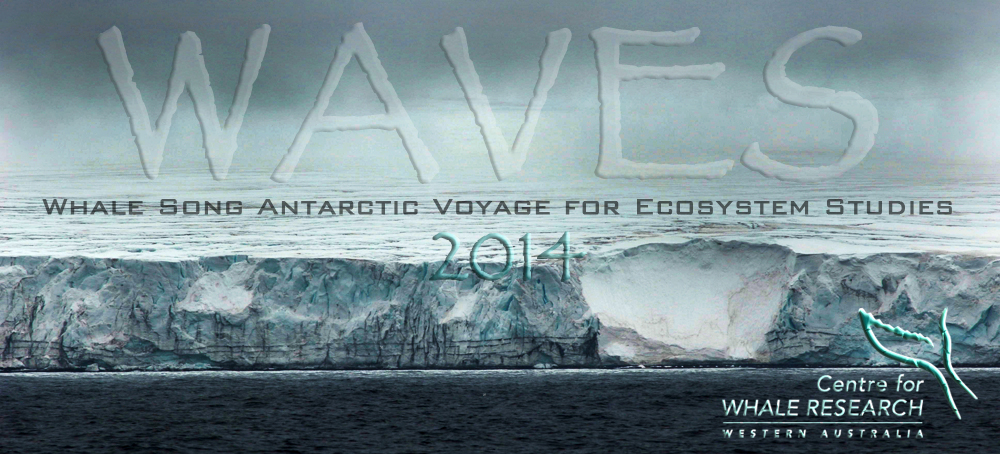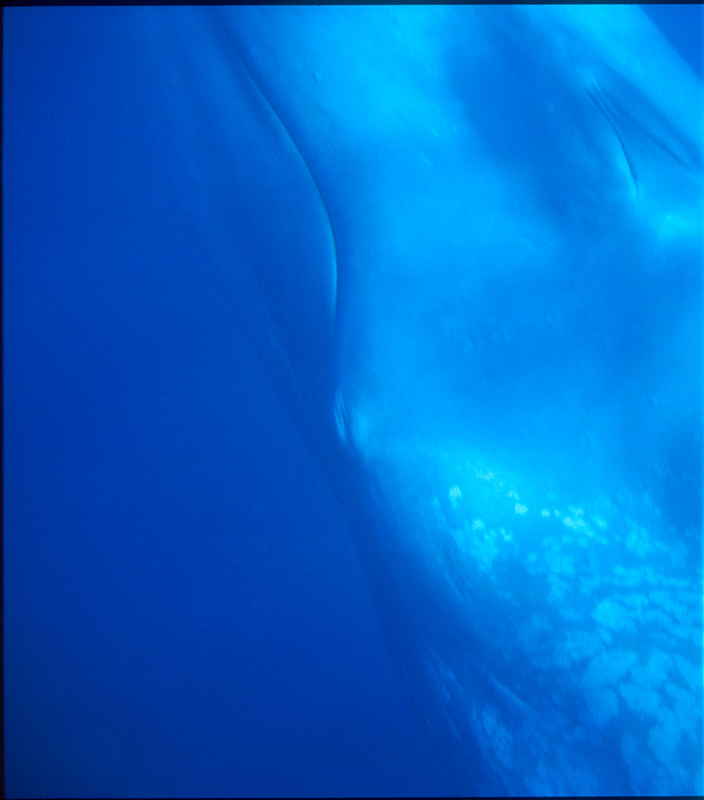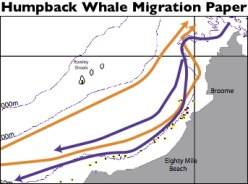Cetacean Jamboree! (Written on Jan 24, 2013)
Reporting for my midnight watch I am very interested to hear that Maria has had a “Cetacean Jamboree” detecting all kinds of cetacean sounds including a mysterious call not unlike Sigourney Weavers’ “Aliens”, dolphins, blues, and a noisy container ship knocking everything out for a half an hour. When I continue to monitor the sonobuoys through the early hours, more blues boom, sperm whales “clap”, and even small half-sweeps that sound likely to be killer whales. I debate with myself whether to wake Curt, it’s 0130am and this would ruin his sleep, but I also I know he’d be very interested to see these signals… I take PASOR screen grabs on the computer and decide to let him sleep!
Last year during January we travelled across the Great Australian Bight and at the Bremer Canyon we encountered 30 killer whales in three pods. These animals have been documented in this area for some time, and I wonder if the sounds we have heard and recorded are the Bremer Canyon killer whales. Checking on the chart the canyon is about 350 nm away, a mere two or three day jaunt for them.
Our destination to the patch of chlorophyll depicting the northern edge of the STC didn’t appear to lead us to animals in the daytime but that night, 12 hours later and still over the patch, there was a lot of action.
With light rain cleaning the salt off the decks, the sky is still cloudy but there is a brightness in the darkness somehow. The wind is Northerly at 14 knots and the barometer is at 1000 Hp and dropping. We shall have some wind later today.
Antarctic blue whales once numbered 240,000 – now the population is thought to be only 1,000 depsite not being hunted for over 50 years. Humpback whale populations have bounced back from near extinction but why are the blue populations struggling to survive? Travelling and monitoring the STC (Sub-Tropical Convergence) may hold some of the clues to survival for blue whales.
Recent collaborative research with Cat Attard at Flinders University examining blue whale DNA indicates that there seems to be hybridisation occurring between pygmy blue whales and blue whales, two sub-species. Does this mean that there is a lak of mating opportunities for these animals within their own sub-species? Is man-made noise in the ocean limiting the normally large range these ocean wanderers can detect mates? Is ther smply not enough food/krill to support a larger population? So many questions…..
The dawn breaks with the now usual grey skies. As we sit in the wheelhouse from 9am onwards, the crew speaks excitedly of the action last night, all deciding they want to get up to see it all tonight. I am not convinced that there will be a party for my 12-3am shift! Looking at the lumpy dark-green sea the sunlight illuminates the lacy white-caps. Crowded in the wheelhouse we have Resty on watch, Inday and Maria on Visual Observations, Nic as the data Recorder and a welcome blow-in, Sam on ukulele. Sacha is on video and Skipper and I are helping with observations. Skip is so happy we are inside this morning and not dallying on deck in the wind and waves. Yesterday, he kept coming to tell me to come inside out of the cold jumping up and pointing at the door with pleading eyes.
The waves are spectacular and build and build, some to 5 metres. My favourite enticing ice-blue glow appears just as the wave crests. Get 406 photos of albatross and waves, what an awesome day!
After lunch of quiche lorraine, hot left-overs, garden salad and orange & poppy-seed cake the seas are getting bouncy 35-40 kt SSE and 4-5 metre swell. At 1252, we see two blue whale signals on a bearing directly in front of us and look and look but the dancing “white-horses” and winds are not perfect for sighting cetaceans. We hope for an opportunistic sighting, we keep hoping. I am constantly reminded of what it means to put a dot on a map, as in, what does it take to collect data on cetaceans. Speaking from experience, I remind myself it takes a whole lot of determination, logistics and the will to be wobbily most of your life!
As usual Visual and Acoustic Observations go through until 20:00 (8pm) and all the crew is happy with the yummy hot steaming bowls of rice with beef or vegetable curries warming the cockles of our hearts and thawing our toes.
Guitars, two and ukuleles also of which we have two, scatter the main saloon. Casual punters pick or strum, all saying “I haven’t played for ages”, but they all sound like concert-performers – especially Inday with her classical Spanish renditions. Sacha is running guitar lessons during observer breaks and I am certain Tas will have a song down-pat before arrival in Sydney. The impromptu live music adds a lovely touch to the 5am until 8pm days. A Whale Song Battle of the Bands will be performed on the night before arrival on the east coast. The bands “The Temperamental Soy Milk” and “The Potential Seagulls” will be judged by Captain Curt on the evening… It does seem like we have been at sea for a wee bit too long!
I have gorgeous images of the blue of the waves imprinted in my memory and can’t wait to see tall blue whale blows anytime from now!
From the blue, bouncy Southern Ocean,
Mich

















No comments yet.